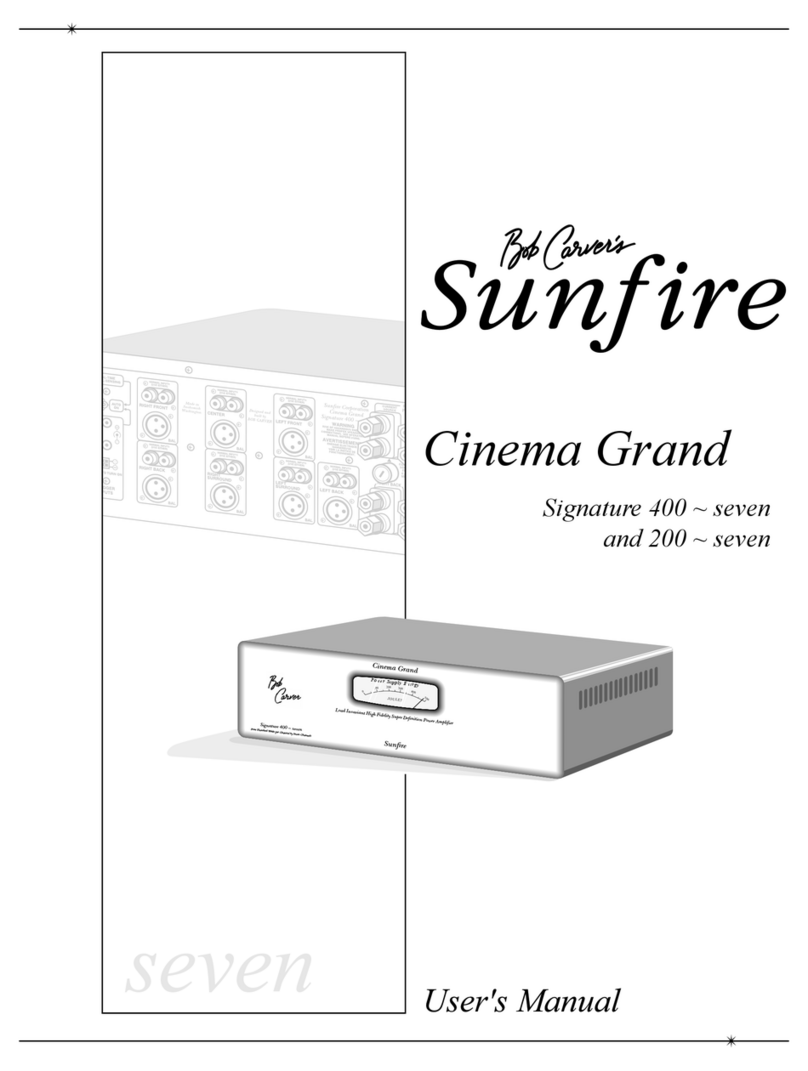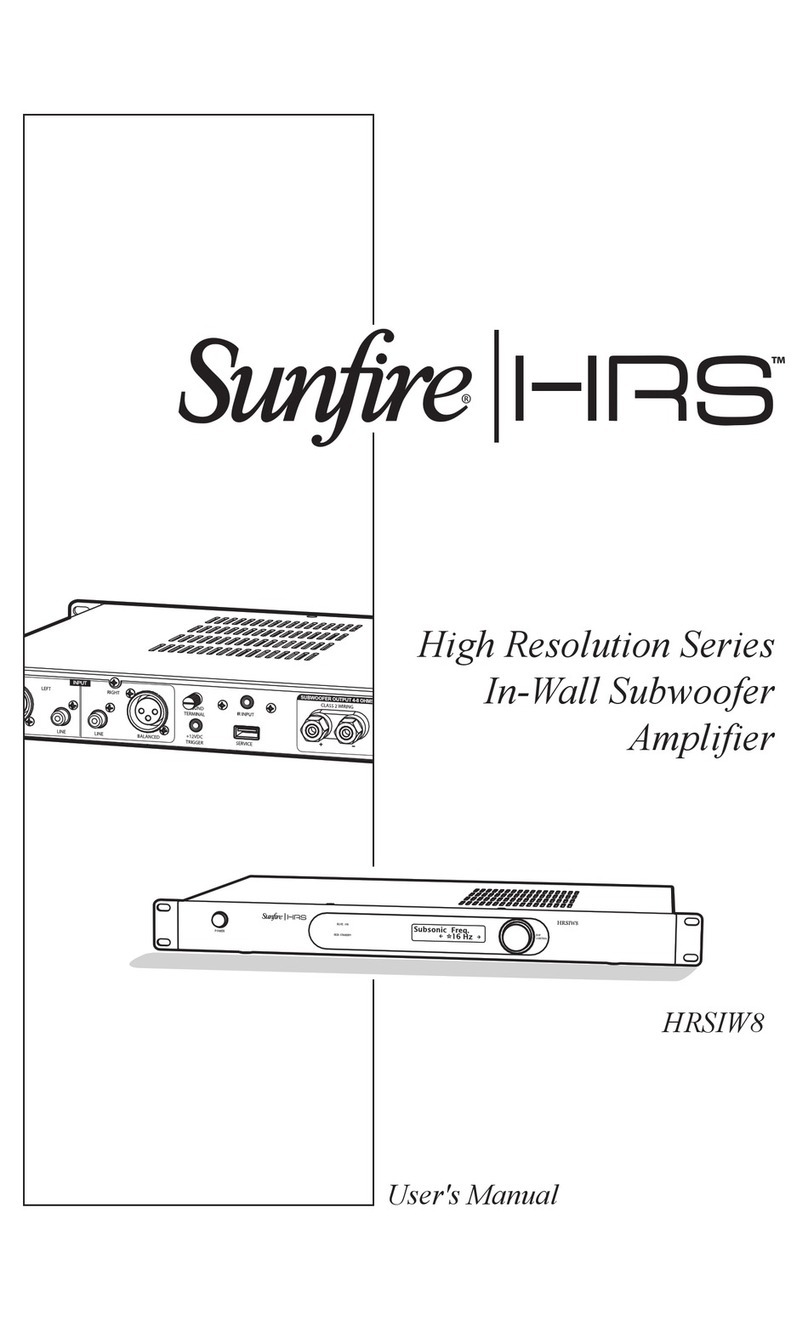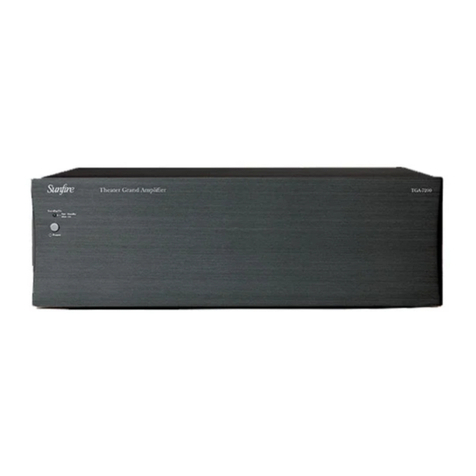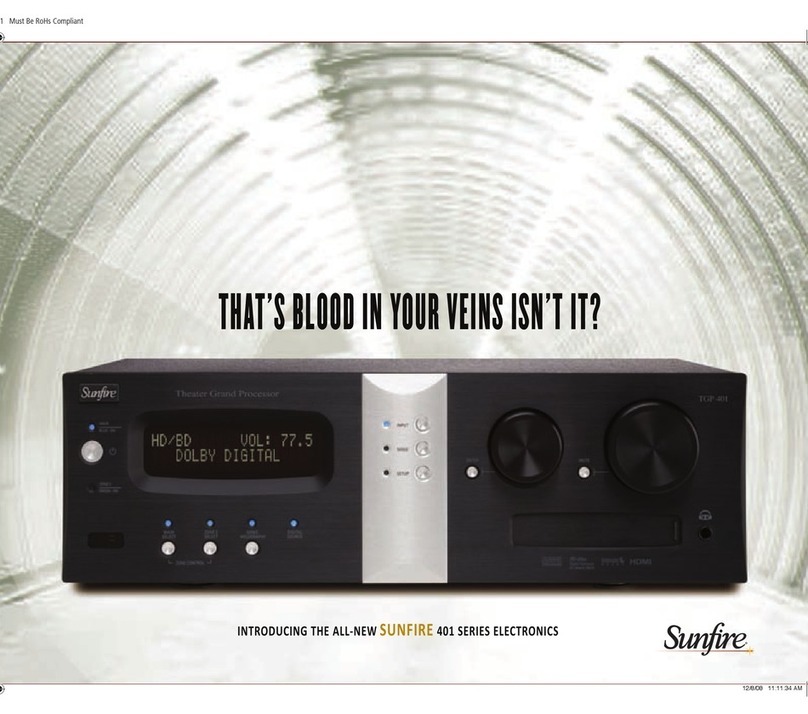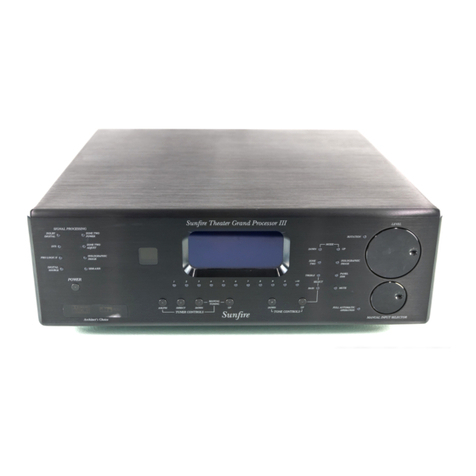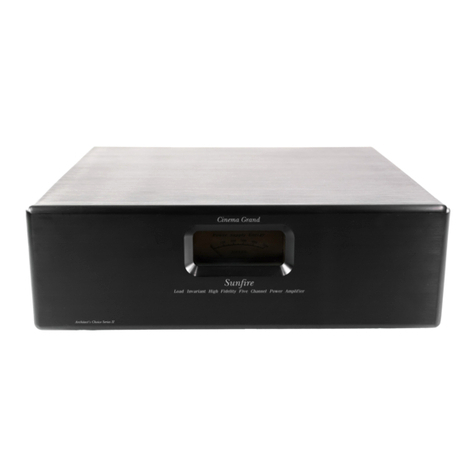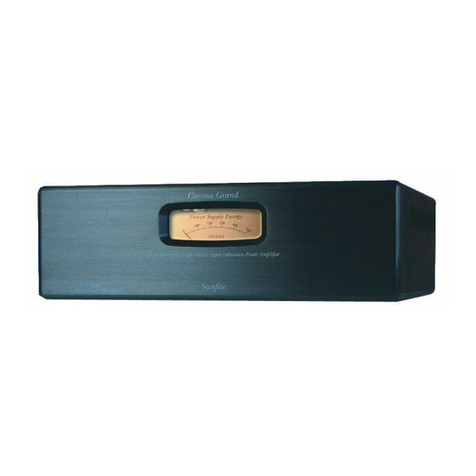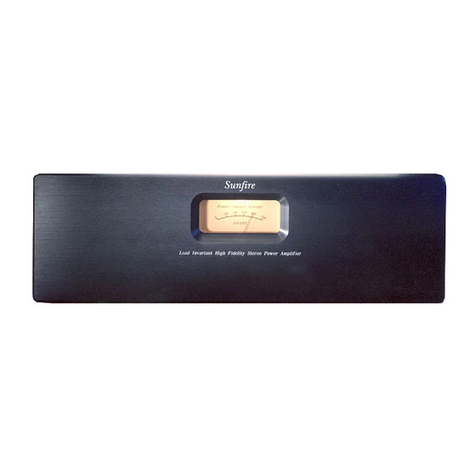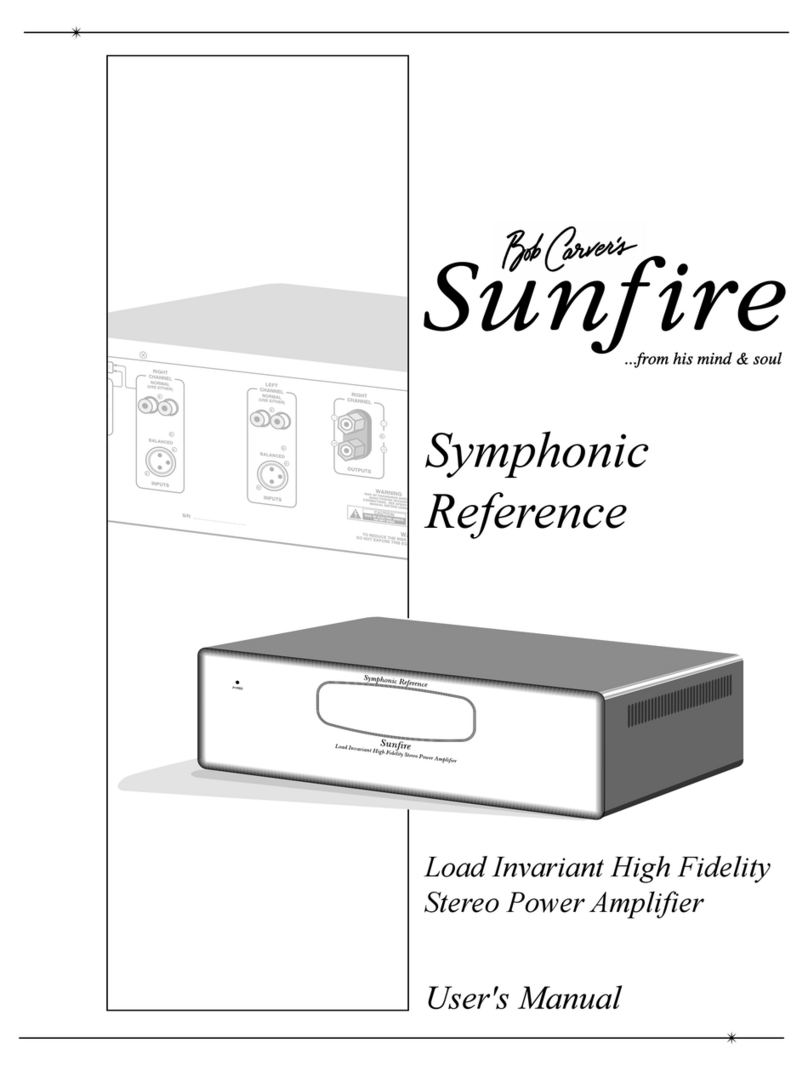
User's Manual
2
Safety
Instructions
1. Read Instructions -– All the safety
and operation instructions should be
read before the SunÞre Component is
operated.
2. Retain Instructions — The safety
and operating instructions should be
kept for future reference.
3. Heed Warnings — All warnings on
the Component and in these operating
instructions should be followed.
4. Follow Instructions — All operat-
ing and other instructions should be
followed.
5. Water and Moisture — The
Component should not be used near
water - for example, near a bathtub,
washbowl, kitchen sink, laundry tub, in
a wet basement, or near a swimming
pool, etc.
6. Ventilation — The Component
should be situated so that its location
or position does not interfere with its
proper ventilation. For example, the
Component should not be situated on
a bed, sofa, rug, or similar surface that
may block any ventilation openings; or
placed in a built-in installation such as
a bookcase, cabinet, or closed equip-
ment rack that may impede the ßow of
air through ventilation openings.
7. Heat — The Component should be
situated away from heat sources such
as radiators, or other devices which
produce heat.
8. Power Sources — The Component
should be connected to a power sup-
ply only of the type described in these
operation instructions or as marked on
the Component.
9. Power Cord Protection — Power-
supply cords should be routed so that
they are not likely to be walked upon
or pinched by items placed upon or
against them, paying particular at-
tention to cords at plugs, convenience
receptacles, and the point where they
exit the Component.
10. Cleaning — The Compo-
nent should be cleaned only as
recommended in this manual.
11. Non-use Periods—The power
cord of the Component should be un-
plugged from the outlet when unused
for a long period of time.
12. Object and Liquid Entry — Care
should be taken so that objects do not
fall into and liquids are not spilled into
the inside of the Component.
13. Damage Requiring Service
— The Component should be serviced
only by qualiÞed service personnel
when:
A. The power-supply cord or the plug
has been damaged; or
B. Objects have fallen, or liquid has
spilled into the Component; or
C. The Component has been exposed
to rain; or
D. The Component does not appear to
operate normally
or exhibits a marked change in perfor-
mance; or
E. The Component has been dropped,
or its cabinet damaged.
14. Servicing — The user should not
attempt to service the Component
beyond those means described in this
operating manual. All other servicing
should be referred to qualiÞed service
personnel.
SAFETY
